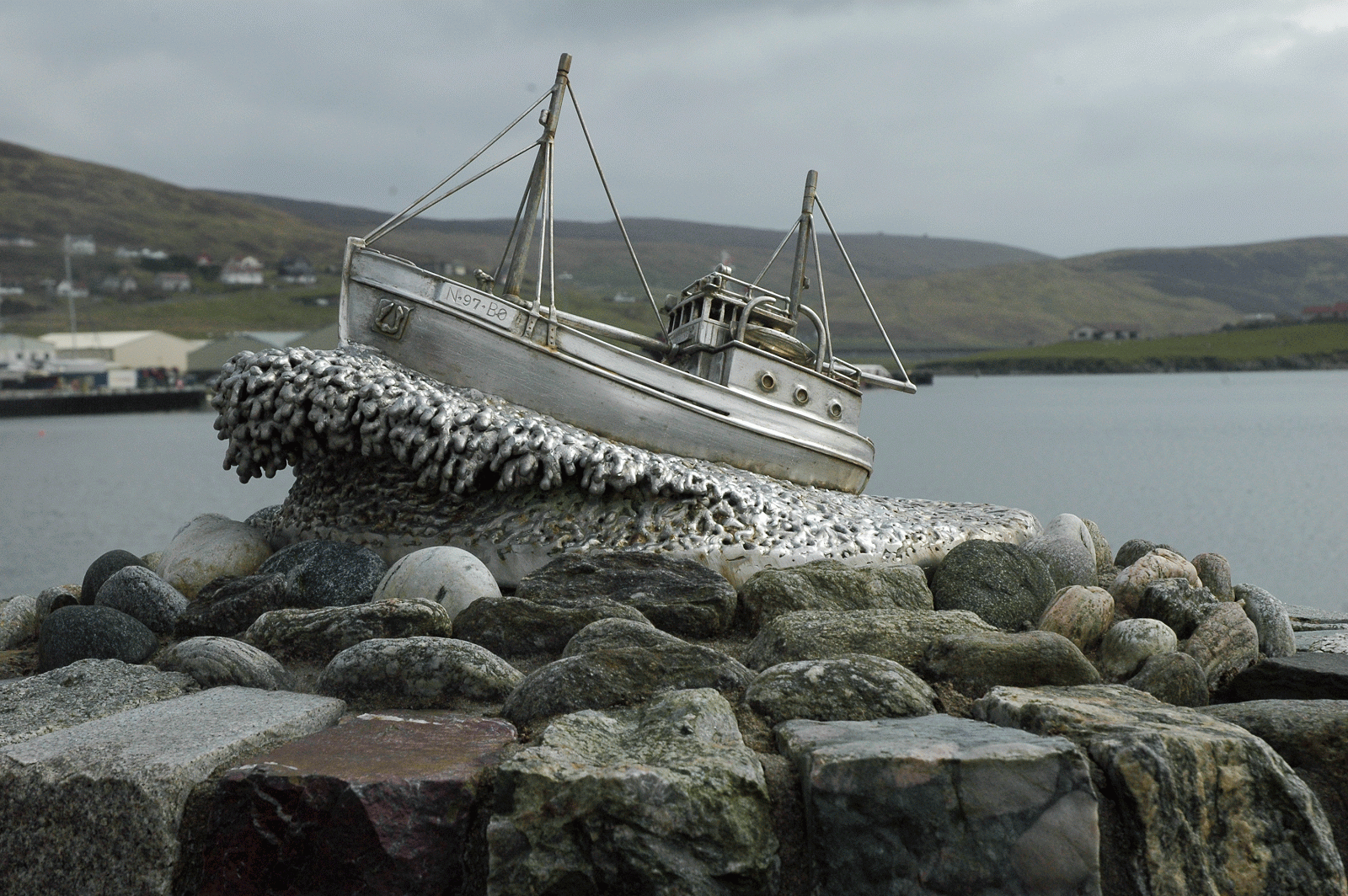
THE Shetland Bus took munitions and supplies from the islands to the resistance movement in Nazi-occupied Norway, while rescuing refugees.
On the 75th anniversary of the first sailing, Bill Moore, who volunteers at Scalloway Museum, told Murray Scougall the Honest Truth about the operation.
What is your background?
I was brought up with stories of the men because my father had the engineering business in Scalloway, which was involved in the maintenance of the boats.
What was the operation’s purpose?
It was set up by Churchill’s Special Operations Executive and the Secret Intelligence Service (MI6) to establish a regular transport system between Shetland and occupied Norway, using Norwegian fishing boats crewed by young Norwegian volunteers.
They carried munitions, explosives, agents, saboteurs, radio operators and so on to reinforce the resistance movement and to bring back refugees.
What dangers were faced by the crews?
The trips had to be carried out in winter, using darkness for cover. Many of the trips were to destinations beyond the Arctic Circle, taking four days or more to get there. The crews had only a compass for navigation and the coastline was treacherous. The boats were under constant threat from both the German patrol planes and the winter storms.
How did the first crossing on August 30, 1941, play out?
The purpose of the first trip from the base at Lunna was to land a messenger. They did this successfully but the crew stayed on shore two days longer than they should have, enjoying local hospitality. As concern mounted in Shetland, an air search was carried out but they eventually returned triumphantly.
What changes were made over time?
The use of fishing boats came to an end in March 1943. That winter, three of the large boats were lost and by then 44 men had perished. Many died at the hands of the Gestapo, some were killed in air strikes and others were drowned in shipwrecks. The human cost of the operation was in question.
President Roosevelt saved the day by donating three submarine-chasers (little battleships) which were fast, quiet and superbly seaworthy. No lives were lost after that.
Who were some of the main men involved?
Col John Wilson from Edinburgh was largely responsible for getting the Shetland Bus started. Of the 30 or so British staff, David Howarth, who later wrote a book, has become well known. Total numbers of personnel varied, but on average there were around 30 British and 70 Norwegians.
Among the Norwegians, several have become legendary.
Leif Andreas Larsen, one of the skippers, has more British decorations than anyone else in World War Two.
Jan Baalsrud’s escape across Arctic Norway to Sweden is one of the most remarkable accounts of human survival.
Unsung heroes include Per Blystad who died at the hands of the Gestapo and Bård Grotle, one of the most charismatic skippers, who died in a shipwreck. There were many others.
How important was the operation in the wartime effort?
The Shetland Bus held out a lifeline to the Norwegians. It gave them hope and also played a very important part in keeping more than 300,000 German troops in Norway.
How is the operation remembered in Shetland?
Three men married local girls and some of the families are in Shetland, some in Norway. The ties with Norway remain strong.
The 44 lost crewmen from the fishing boats are honoured with wreath-laying ceremonies at our memorial twice a year – on May 17 (Norway’s Constitution Day) and on Armistice Sunday. Many Norwegians come over for the occasion in May and the numbers increase year by year. The Shetland Bus is certainly not forgotten.
READ MORE
Ledger reveals extent of damage to Kirk buildings during Second World War
Churchill set up a special warfare unit with its own ’killing school’ in Scotland

Enjoy the convenience of having The Sunday Post delivered as a digital ePaper straight to your smartphone, tablet or computer.
Subscribe for only £5.49 a month and enjoy all the benefits of the printed paper as a digital replica.
Subscribe